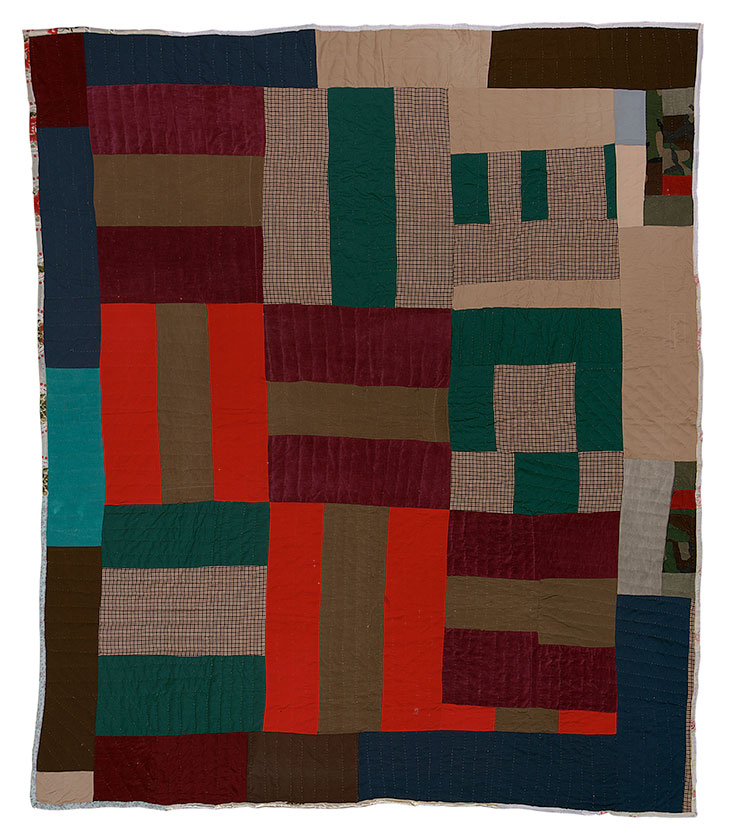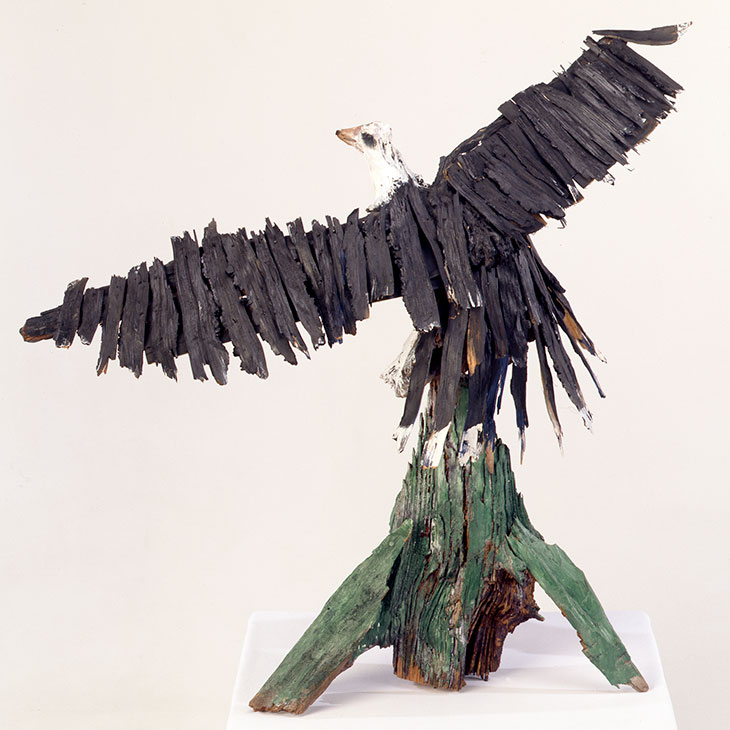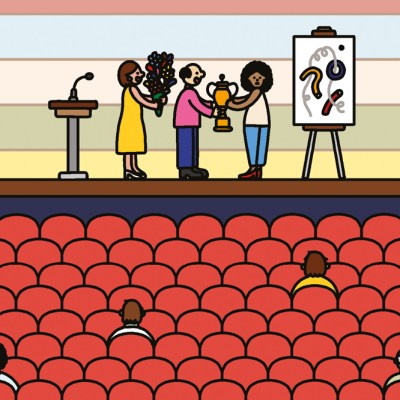The historian Jennifer Rae Greeson has called the American South an ‘internal other […] an intrinsic part of the national body that nonetheless is differentiated and held apart from the whole’. The exhibition ‘We Will Walk – Art and Resistance in the American South’ at the Turner Contemporary in Margate articulates Southernness through the lens of a too-often neglected corpus of African-American artists. In a genre-bursting and affecting assemblage of works, co-curators Hannah Collins and Paul Goodwin have sought to explore how the American Civil Rights Movement of the 1950s and ’60s shaped the work of these artists.
In reality, works inspired by the Civil Rights Movement are but a small percentage of the large archive of artists and works presented here. Some of the exhibition’s most memorable pieces, such as the Southern Gothic sidewalk drawings of the formerly enslaved artist Bill Traylor and the collection of abstract quilts from Gee’s Bend, Alabama, either predate or do not overtly engage with the moment of Civil Rights. These works helpfully situate the struggles of the 1950s and ’60s within a narrative of black Southern artistic expression that challenges, mocks, and inventively overturns legacies of oppression and bigotry, generating novel forms of protest.
Basket Weave Variation (c. 1990), Mary Lee Bendolph. Photo: Stephen Pitkin/Pitkin Studio; © Mary Lee Bendolph/Artists Rights Society (ARS), New York

This longer history told by ‘We Will Walk’ of the relationship between aesthetics and resistance in black Southern art comes alive in rooms like ‘The Yard as Witness’. Through a collection of photographs and objects, this room argues for the yard as a site of personal expression and collective mourning. Photographs by Collins of Dinah Young’s backyard, for instance, show how Young has created a living sculpture of found materials that insists on her right to occupy space in a region that once denied her ancestors their humanity. The careful critical attention paid here to works that might have been considered ‘folk art’ (at best) or junk (at worst) allows the Southern black yard to come to life for viewers and reclaims its centrality as a space for negotiating resistance to white supremacy.
The exhibition is particularly compelling when it illuminates the ways in which African-American artists traverse aesthetic boundaries. The evocative sculpture-instruments of Freeman Vines, such as Death Mask (1967), suggest how productively one form of artistic making can bleed into another, generating something entirely new. The curators emphasise Vines’s revolutionary craft by allowing visitors to listen to his instruments being played while viewing them behind glass. Equally intriguing are the sculptures of James ‘Son Ford’ Thomas, musician and gravedigger, who fashioned the heads of historical figures and people he knew, often adding the real human teeth he encountered in his day job. Thomas’s five clay heads, disturbing in their bland impersonality, also exemplify the irony that defines many of the exhibition’s most arresting works; his grinning skulls seem to mock the powerful by reminding them of their own mortality. In a similar vein, Ralph Griffin’s Eagle (1998) uses a stark colour palette of black, white and green and jagged pieces of found wood to render an icon of American freedom fearful and ghastly.
Eagle (1988), Ralph Griffin. Photo: Stephen Pitkin/Pitkin Studio; © Estate of Ralph Griffin/Artists Rights Society (ARS)/New York

To draw through lines between works created across more than a century and throughout a geographically vast region, the curators often note the improvisational and abstract qualities of pieces, asserting that ‘the works here are arguably an equivalent of jazz in visual art’. At times the curatorial desire to establish the artistic motivations of the living people whose work is displayed can seem overzealous. Certainly the quasi-modernist quilts of Gee’s Bend and Joe Minter’s found steelyard objects were created improvisationally, but was this act of making do motivated by an aesthetic philosophy or the necessities of life in an impoverished region? Other questions raised and largely left unanswered by the exhibition have to do with the relationship between art and politics. At what point does a political act become an artistic one, and vice versa? Some of the works included seem to struggle within the rubric of political protest and resistance guiding the exhibition, as if the curators had difficulty choosing from such a wealth of underrepresented art.
Ultimately, the exhibition’s occasional weaknesses demonstrate precisely why more shows like this are needed. ‘We Will Walk’ makes clear that the Civil Rights Movement was just one historical node in a much longer and still evolving tradition of African-American creativity and protest in the South. Many more exhibitions of black Southern art are necessary in the UK and beyond to mine the archive’s riches.
‘We Will Walk – Art and Resistance in the American South’ is at Turner Contemporary, Margate, until 3 May.



